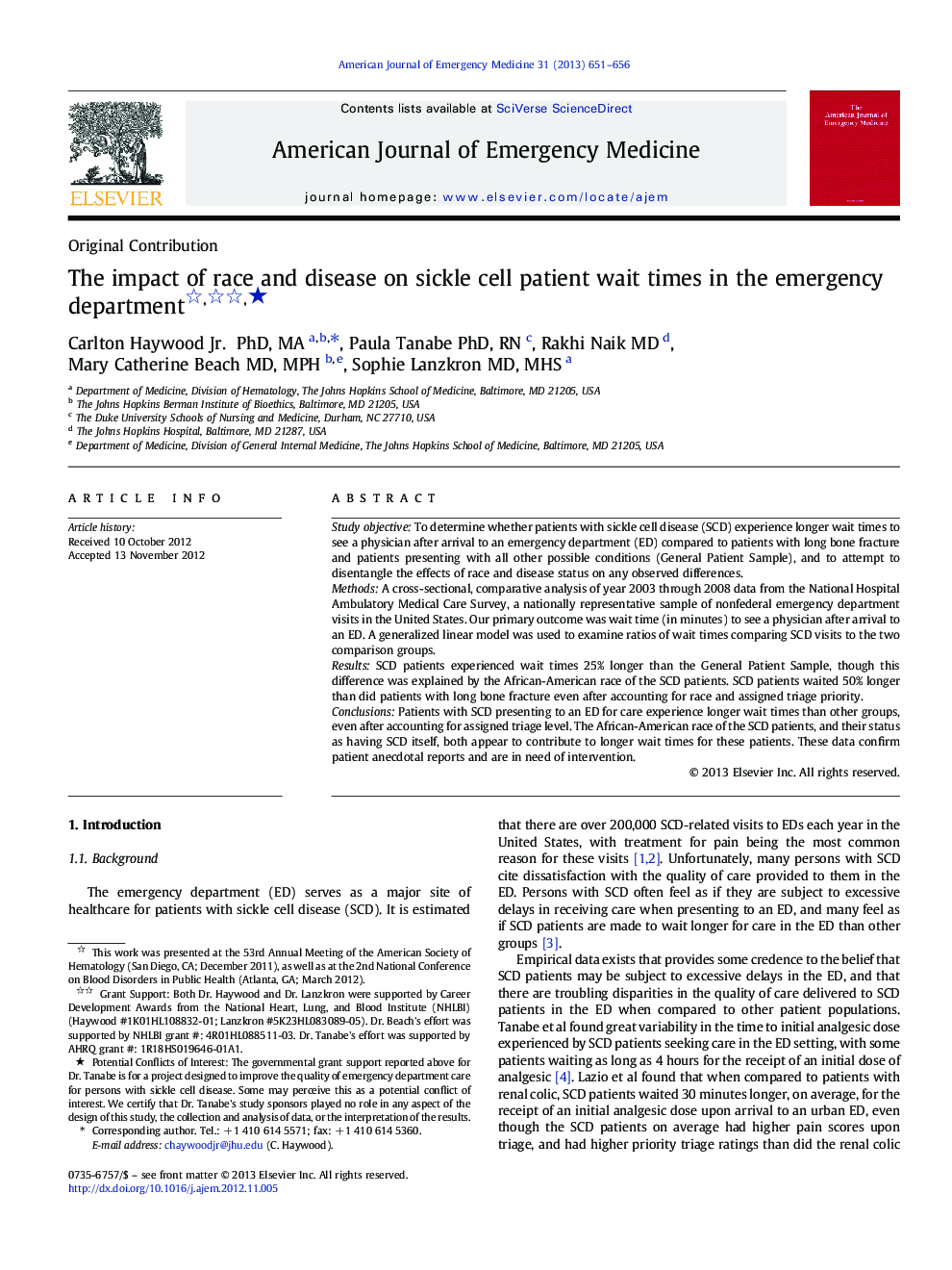| Article ID | Journal | Published Year | Pages | File Type |
|---|---|---|---|---|
| 3224983 | The American Journal of Emergency Medicine | 2013 | 6 Pages |
Study objectiveTo determine whether patients with sickle cell disease (SCD) experience longer wait times to see a physician after arrival to an emergency department (ED) compared to patients with long bone fracture and patients presenting with all other possible conditions (General Patient Sample), and to attempt to disentangle the effects of race and disease status on any observed differences.MethodsA cross-sectional, comparative analysis of year 2003 through 2008 data from the National Hospital Ambulatory Medical Care Survey, a nationally representative sample of nonfederal emergency department visits in the United States. Our primary outcome was wait time (in minutes) to see a physician after arrival to an ED. A generalized linear model was used to examine ratios of wait times comparing SCD visits to the two comparison groups.ResultsSCD patients experienced wait times 25% longer than the General Patient Sample, though this difference was explained by the African-American race of the SCD patients. SCD patients waited 50% longer than did patients with long bone fracture even after accounting for race and assigned triage priority.ConclusionsPatients with SCD presenting to an ED for care experience longer wait times than other groups, even after accounting for assigned triage level. The African-American race of the SCD patients, and their status as having SCD itself, both appear to contribute to longer wait times for these patients. These data confirm patient anecdotal reports and are in need of intervention.
